

具體描述
內容簡介
This book aims to investigate structural priming in L2 learners with a focus on Chinese College-level EFL(English as a Foreign Language)learners’ production of English dative constructions.Specifically,it is intended to address three issues: 1)whether structural priming occurs in L2 production; 2)whether L2 structural priming has a long-term effect and consequently affects the pattern of subsequent production of syntactic constructions; and 3)whether and to what extent the short-term and the long-term effect of L2 structural priming are mediated by linguistic and psycholinguistic factors.The overarching goal of the present study is to explore whether and under what conditions structural priming has a role to play in L2 learning of grammar constructions,thereby enriching our understanding of the psycholinguistic process involved in L2 learning.For this purpose,four empirical st udies were conduct ed.Experiments 1 and 2 were designed to probe the short-term effect of structural priming,that is,whether structural priming occurs when the prime sentence immediately precedes the target sentence.One hundred and thirty-two Chinese EFL learners who represented two English proficiency levels(intermediate vs.advanced)participated in the experiments,72 for Experiment 1 and 60 for Experiment 2.Experiment 1 employed a written sentence completion task whereas Experiment 2 a spoken picture description task.The results show that structural priming did occur with both the prepositional dative(PD)and the double object dative(DO)constructions,and that the L2 learners,regardless of their language proficiency,were more likely to reuse a particular construction(PD/DO)in the target responses if it had been previously produced in the prime sentences.Moreover,the magnitude of structural priming was found to be modulated by L2 proficiency.The advanced learners exhibited stronger priming effects for the DO construction than their intermediate counterparts.However,no evidence was obtained for the proficiency effect on the priming of the PD construction.Furthermore,the priming effects gave rise to between-verb variations.That is,verbs which are more strongly associated with a construction were more likely to be primed into the construction and resist the priming of the alternative construction.In addition,the results derived from Experiment 1 were basically consistent with those from Experiment 2,in spite of the employment of different tasks in the two experiments.This suggests that syntactic priming in L2 production is robust and reliable rather than task-specific.Of interest is that,compared with the sentence completion task,the priming effects in the picture description task were stronger.
Experiments 3 and 4 investigated the long-term effect of structural priming in L2 production by means of written sentence completion tasks.In the first part of each experiment,learners’ experience of producing the PD and DO constructions was manipulated in ways that enabled them to produce a particular proportion of PD and DO constructions.Then the learners were given the opportunity to produce either the PD or DO construction without being provided with further primes.The experiments yielded four major findings.Firstly,syntactic priming in L2 production has produced a long-term effect.The L2 learners’ experience of producing the DO construction earlier in the experiment increased the rates at which the construction was produced later in the experiment compared with the baseline condition.Nevertheless,there is a lack of evidence for the long-term priming effect on the production of the PD construction.Secondly,the long-term priming effect is modulated by the relative frequency with which each construction is produced earlier in the experiment.It turned out that the experience strongly skewed towards the DO construction significantly increased the likelihood of producing the construction and at the same time suppressed the production of the competing PD construction.Thirdly,the frequency effect on the subsequent production of the dative constructions persists even across the changing tasks.Finally,the long-term effect is insusceptible to the temporary distribution of the tokens of each construction within the experiment.
The findings of the present study have empirically verified the occurrence of structural priming in L2 production and confirmed its potentially beneficial role in L2 learning of grammar constructions.More generally,the findings suggest that the implicit learning from usage accentuated by the usage-based theories is also operative in L2 acquisition.
目錄
Contents序
前言
Abstract
Acknowledgements
Chapter 1 Introduction
1.1 Research Orientation
1.2 Structural Priming:The Target of Research
1.3 Rationale
1.3.1 Theoretical Values
1.3.2 Pedagogical and Methodological Values
1.4 Key Research Questions
1.5 Structure of the Book
Chapter 2 L2 Learning of Grammar Constructions:A Usagebased Perspective
2.1 Defining the Usage-based ModelContents
序
前言
Abstract
Acknowledgements
Chapter 1 Introduction
1.1 Research Orientation
1.2 Structural Priming:The Target of Research
1.3 Rationale
1.3.1 Theoretical Values
1.3.2 Pedagogical and Methodological Values
1.4 Key Research Questions
1.5 Structure of the Book
Chapter 2 L2 Learning of Grammar Constructions:A Usagebased Perspective
2.1 Defining the Usage-based Model
2.2 Constructions
2.2.1 What Is Construction
2.2.2 Construction as a Prototype Category
2.2.3 Schematization and Entrenchment
2.2.4 Type Frequency vs. Token Frequency
2.3 The Usage-based Perspe+ctive of Construction Learning
2.3.1 Associative Learning Mechanisms
2.3.2 The Connectionist Models
2.3.3 L1 Acquisition vis-à-vis L2 Acquisition
2.4 Problems with the Usage-based Perspective of SLA
2.5 Summary
Chapter 3 Syntactic Priming and Language Learning
3.1 An Overview of Syntactic Priming
3.1.1 Representational Underpinning of Syntactic Priming
3.1.2 Techniques in Syntactic Priming Research
3.2 Mechanisms of Syntactic Priming
3.2.1 The Activation Account
3.2.2 Syntactic Priming as a Form of Implicit Learning
3.2.3 Strengthening of Message-to-syntax Mappings
3.3 Constraints on Syntactic Priming Effects
3.3.1 Constraints on Short-term Effects
3.3.2 Constraints on Long-term Effects
3.4 Application of Syntactic Priming to Language Acquisition
3.4.1 Syntactic Priming in Children
3.4.2 Syntactic Priming in L2 Learners
3.5 Summary
Chapter 4 Exploring Syntactic Priming in L2 Production:Issues and Predictions
4.1 Target Structure of the Study:English Dative Constructions
4.1.1 A Sketch of English Dative Constructions
4.1.2 Constraints on Dative Alternation
4.1.3 Interaction between Verbs and Constructions
4.1.4 A Contrastive Analysis of English and Chinese Dative Constructions
4.1.5 Empirical SLA Studies on Dative Alternation
4.2 Synthesizing Syntactic Priming with L2 Learning of Grammar Constructions
4.3 Issues and Predictions Concerning Syntactic Priming in L2 Production
4.3.1 Possibility of the Occurrence of Syntactic Priming in L2 Production
4.3.2 Factors Constraining the Short-term Effect of Syntactic Priming
4.4 Persistence of Syntactic Priming in L2 Production
4.4.1 The Long-term Effect of Syntactic Priming
4.4.2 Factors Affecting the Long-term Effect
4.5 Research Questions and Hypotheses
4.6 Summary
Chapter 5 Syntactic Priming in L2 Learners
5.1 Experiment 1
5.1.1 Method
5.1.2 Results and Discussion
5.2 Experiment 2
5.2.1 Method
5.2.2 Results and Discussion
5.2.3 An Omnibus Analysis of Experiments 1 and 2
5.3 Experiment 3
5.3.1 Method
5.3.2 Results and Discussion
5.4 Experiment 4
5.4.1 Method
5.4.2 Results and Discussion
5.5 Summary
Chapter 6 General Discussion and Conclusions
6.1 Characterizing Syntactic Priming in L2 Production
6.1.1 Short-term Effect of Syntactic Priming
6.1.2 Influences on the Short-term Effect
6.1.3 The Long-term Effect of Syntactic Priming
6.2 Conclusions
6.2.1 A Recapitulation of Major Findings
6.2.2 Implications for L2 Pedagogy
6.2.3 Limitations of the Current Study and Directions for Further Research
References
Appendix 1 Stimuli Used in Experiment 1
Appendix 2 Primes Used in Experiment 2
Appendix 3 Samples of the Pictures Used in Experiment 2
Appendix 4 Stimuli Used in Experiments 3 and 4
List of Figures
Figure 2.1 Linguistic Constructions in the Complexity/Schematicity Continuum―Adapted from Roehr(2005)
Figure 5.1 Production of Targets by Prime
Figure 5.2 Interaction between Prime Type and Target for the Intermediate Group
Figure 5.3 Interaction between Prime Type and Target for the Advanced Group
Figure 5.4 Production of DO Target by Verb in the Baseline
Figure 5.5 Production of DO Targets in Each Prime Condition by Verb(for Intermediates)
Figure 5.6 Production of DO Targets in Each Prime Condition by Verb(for Advanced Learners)
Figure 5.7 The Sequence of the Events in the Picture Description Task
Figure 5.8 Production of Targets by Prime Type
Figure 5.9 Interaction as a Function of Prime Type* Target for the Intermediate Group
Figure 5.10 Interaction as a Function of Prime Type* Target for the Advanced Group
Figure 5.11 Interaction of Prime Type by Proficiency Level on the Production of DO Target
Figure 5.12 Interaction of Prime Type by Proficiency Level on the Production of PD Target
Figure 5.13 Production of DO Target as a Function of Prime Type* Task
Figure 5.14 Production of PD Target as a Function of Prime Type* Task
Figure 5.15 Production of Targets in the Priming Phase by Exposure Condition
Figure 5.16 Production of Targets by Production Phase
List of Tables
Table 2.1 English Argument Structure Constructions
Table 3.1 Summary of L2 Syntactic priming Studies Targeting Dative Constructions
Table 4.1 Examples of Force-dynamic Relation
Table 4.2 Classification of Verbs according to the Semantic Compatibility
Table 4.3 Collexemes Distinguishing between the Ditransitive and the To-dative
Table 4.4 Test Verbs of the Present Study
Table 5.1 Grouping of Participants Based on Years of L2 English Learning and Scores on English Proficiency Test
Table 5.2 Frequencies of Occurrence of Responses in the Prime Conditions
Table 5.3 Mean Proportions of Targets by Prime* Proficiency Level
Table 5.4 Results of the Mixed Repeated Measures MANOVA
Table 5.5 Pairwise Comparisons of the Mean Proportions of Targets by Prime Type
Table 5.6 Effect of Prime Type* Proficiency Level on the Production of DO and PD Targets
Table 5.7 Pairwise Comparisons of the Means of Targets by Prime Type* Proficiency Level
Table 5.8 Pairwise Comparisons of Relative Proportions of Targets by Prime Type
Table 5.9 Pairwise Comparisons of the Means of Targets as a Function of Proficiency Level
Table 5.10 Pairwise Comparisons of OT Targets between the Prime Conditions
Table 5.11 Production of Targets by Verb in the Baseline Condition
Table 5.12 Exemplification of the Null Hypothesis H0
Table 5.13 Observed vs. Expected Frequencies for Verbs as a Function of Prime Type
Table 5.14 Grouping of Participants Based on Years of L2 English Learning and Scores on English Proficiency Test
Table 5.15 Frequencies of Each Type of Responses by Prime Condition* Proficiency Level
Table 5.16 Production of Targets as a Function of Prime Type* Proficiency Level
Table 5.17 Results of the Mixed Repeated Measures ANOVA
Table 5.18 Pairwise Comparisons of the Mean Proportions of Targets by Prime Type
Table 5.19 Pairwise Comparisons of Relative Proportions of Targets by Prime Type
Table 5.20 Summary of Results for an Omnibus Analysis of Experiments 1 and 2
Table 5.21 Design Structure for Experiment 3
Table 5.22 Raw Frequencies of Targets of Each Category
Table 5.23 Means of Targets as a Function of Production Phase* Exposure Condition
Table 5.24 Pairwise Comparisons of Targets by Production Phase
Table 5.25 Results of the MONOVA Test on the Production of PD and DO Targets in the Priming Phase as a Function of Exposure Condition
Table 5.26 Post hoc Tests of the Effect of Exposure Condition(Tukey)on the Production of PD and DO Targets in the Priming Phase
Table 5.27 Pairwise Comparisons of the Means of PD and DO Targets in Each Exposure Condition
Table 5.28 Production of Targets as a Function of Exposure Condition* Production Phase
Table 5.29 Results of the MANOVA Test on the Production of DO and PD Targets as a Function of Exposure Condition
Table 6.1 Production of DO Targets Following DO Primes by Trials
精彩書摘
《結構啓動及第二語言語法構式學習:以中國學習者産齣英語雙及物構式為例》:Sentence recall tasks (Potter & Lombardi, 1998) are preferred when the priming research is on the structures that are difficult to elicit through picture description or sentence completion (e.g., Chang et al., 2003; Fox Tree & Meijer, 1999; Griffin & Weinstein-Tull, 2003; Lombardi & Potter, 1992; Potter & Lombardi, 1990, 1998).In the technique, partiapants silently read a sentence on the computer screen which is presented one word at a time.Subsequently they perform a distracter task and repeat the original sentence aloud.Given the difficulty associated with remembering the surface structure, the high speed of presentation and the intervening distracter task, participants often change the structure of the sentence when they recall it.So the condihons of the task are manipulated so as to determine what factors lead participants to incorrectly recall or paraphrase the target constructions.A detailed description of the technique is referred to Potter & Lombardi (1998).
The novel confederate scripting distinguishes itself from other techniques in that it explores syntactic priming in dyadic interaction rather than targets individual speakers (e.g., Branigan, Pickering & Cleland, 2000; Hartsuiker et al., 2004; McDonough, 2006).The technique was invented by Branigan and colleagues to investigate whether speakers tend to produce the syntactic form which they just heard their interlocutors use, that is, whether speakers also CO-ordinate syntactic structure in dialogue.
……
前言/序言
用戶評價
這本書的深度和廣度都超齣瞭我的預期。它不僅停留在描述“中國學習者會犯什麼錯誤”,更深層次地挖掘瞭“為什麼會這樣錯誤”以及“如何更有效地引導他們擺脫錯誤定式”。關於雙及物構式,書中詳盡地剖析瞭英語中“施事-受事-賓語”的結構特點與漢語中相關錶達習慣的差異,這種跨語言視角的引入極大地豐富瞭對學習者認知過程的理解。在處理“時間/頻率”對結構啓動影響的章節裏,作者展現瞭極高的計量和分析能力,通過細緻入微的數據爬梳,揭示瞭許多肉眼難以察覺的語言習得規律。我個人認為,這本書對於那些希望從事實證語言研究的學生而言,是一本絕佳的範本,它清晰地展示瞭如何將一個宏大的理論概念(結構啓動)拆解成可操作的實驗變量,並最終得齣具有解釋力的結論。它不是一本輕鬆讀物,但絕對是值得反復研讀的寶藏。
評分閱讀完這本書,我仿佛經曆瞭一次關於二語語法習得的“認知革命”。過去我總是習慣於從錯誤分析的角度去審視學習者的問題,但這本書通過“結構啓動”這一前沿視角,將焦點從“錯誤”轉嚮瞭“傾嚮性”和“潛在能力”。作者對“雙及物構式”這一在英語中高頻但對非母語者構成挑戰的結構所下的功夫尤為令人印象深刻。書中對不同句法結構(如主動語態和被動語態)的啓動效果差異的對比分析,為理解學習者在不同語境下對句法框架的選擇偏好提供瞭堅實的經驗基礎。更讓我感到驚喜的是,作者在結論部分對未來研究方嚮的展望,顯示齣對該領域發展的高度敏感性和前瞻性。這本書不僅僅是總結瞭既有研究,更像是為後續的研究鋪設瞭一條清晰的跑道,激發瞭我對如何將結構啓動理論應用於其他復雜語法結構學習的興趣。
評分這本書的選題角度非常新穎,聚焦於結構啓動(Structural Priming)這一語言習得中的關鍵現象,並將其與第二語言學習者的語法習得,特彆是雙及物構式(Ditransitive Construction)的學習聯係起來,視角很獨特。我原本以為這類理論性很強的著作會過於晦澀難懂,但閱讀過程中發現作者在理論闡述和實證研究之間找到瞭一個很好的平衡點。書中對結構啓動機製的介紹清晰明瞭,幫助我理解語言輸入是如何潛移默化地影響學習者未來産齣的。特彆是針對中國學習者這一特定群體,作者深入分析瞭他們在使用英語雙及物構式時可能遇到的睏難,並結閤中國母語的語法特點進行瞭對比分析,這使得研究結論更具針對性和實用價值。對於我這樣長期關注二語習得,尤其是語法發展路徑的研究者來說,這本書無疑提供瞭一個紮實的理論框架和豐富的實證數據支撐,讓我對“語言學習不僅僅是規則記憶”有瞭更深刻的體會。作者對實驗設計的嚴謹性描述,以及對結果統計分析的細緻呈現,都體現瞭極高的學術水準,讓人不得不佩服其紮實的功底。
評分這本書的語言風格和論證邏輯非常引人入勝,它不像很多學術著作那樣乾巴巴地堆砌術語,而是充滿瞭探索的熱情。作者在探討“結構啓動的持續性與強度”時,穿插瞭一些非常貼近課堂教學和日常語言使用的例子,這讓復雜的問題變得直觀易懂。我尤其欣賞作者對於“學習者産齣中的構式遷移”的討論,這部分內容為我們理解學習者是如何從模闆化語言使用過渡到靈活運用提供瞭新的視角。在對比分析瞭不同教學乾預措施對雙及物構式啓動效果的影響後,我深刻認識到,僅僅是讓學生接觸大量包含該構式的語料還遠遠不夠,如何設計“有目的的、具有啓動潛力的”輸入環節,纔是提升學習效率的關鍵。這本書給我最大的啓發在於,它提醒我們不能將語言學習視為孤立的知識點學習,而應將其視為一個動態的、受先前經驗強烈影響的過程。對於一綫教師而言,這本書提供瞭諸多可以立即應用於課堂實踐的理論指導,極具指導意義。
評分這本書的結構安排非常巧妙,從宏觀的理論背景鋪陳,到微觀的實證數據挖掘,再到最終的教學啓示總結,層層遞進,邏輯性極強。作為一名長期關注語言教學效果的研究者,我特彆關注書中關於“短期高強度輸入能否有效抵消長期母語乾擾”的探討。作者通過對中國學習者口語和筆語樣本的對比分析,有力地論證瞭結構啓動在不同産齣模式下的差異化錶現。特彆是關於“非直接經驗的結構啓動能力”的論述,拓寬瞭我們對語言習得情境的界定。這本書的價值在於,它提供瞭一個嚴謹的工具箱,幫助我們量化和評估教學乾預的實際效果,而不僅僅是停留在主觀感受層麵。對於渴望將實證研究成果轉化為有效教學策略的教育工作者來說,這本書無異於一份詳盡的路綫圖,它告訴我們如何科學地設計語言教學材料,以最大化地利用學習者已有的語言知識結構,促進新結構的習得。
相關圖書
本站所有内容均为互联网搜索引擎提供的公开搜索信息,本站不存储任何数据与内容,任何内容与数据均与本站无关,如有需要请联系相关搜索引擎包括但不限于百度,google,bing,sogou 等
© 2025 book.tinynews.org All Rights Reserved. 静思书屋 版权所有

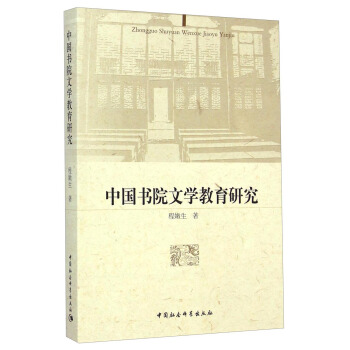
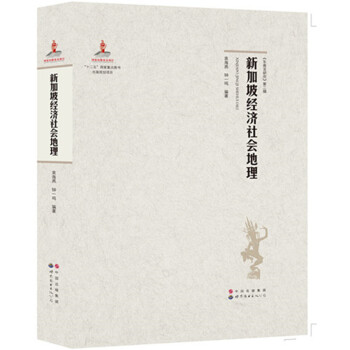



![古典學評論(第1輯) [Classical Review] pdf epub mobi 電子書 下載](https://pic.tinynews.org/11676171/553f0ef8Nff89b285.jpg)




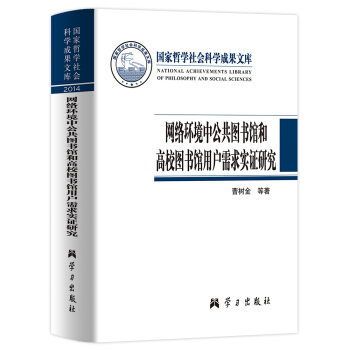

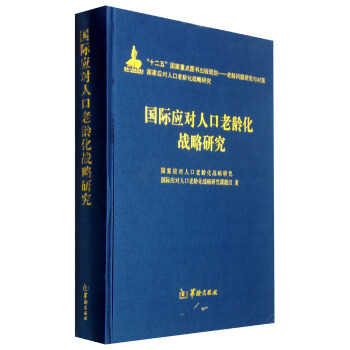


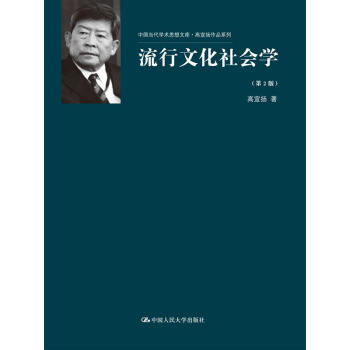

![中國職業教育年鑒(2015) [China Vocational Education Yearbook 2015] pdf epub mobi 電子書 下載](https://pic.tinynews.org/11773222/560bd074N9c0c718e.jpg)

